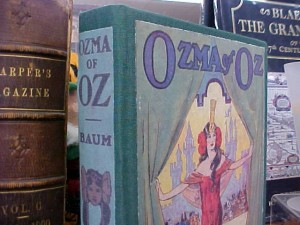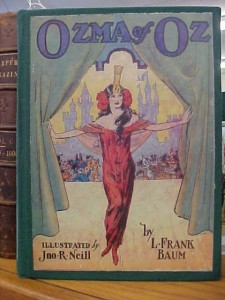L. Frank Baum was a wizard. Not the wand-waving, lightning-bolt-scar-on-the-forehead kind of magic man, but more like the man behind the curtain in the land of Oz. If the name is not familiar, L. Frank Baum created the Wizard.
Of Oz.
If he had been born in this day and age, he would no doubt be among the richest Americans, not unlike J.K. Rowling, the creator of the Harry Potter series. Just like Rowling, and unbeknownst to most US readers, Baum also wrote a series of books about his Wonderful Wizard of Oz. L. Frank Baum (his first name was Lyman) did not live to see his creation brought to the movie screen like Harry Potter, it wasn’t for lack of popularity. Films were not yet to the point they could accommodate such a work.
The Wizard of Oz starring Judy Garland was released by MGM in 1939, twenty years after Baum’s death.
Baum was a seer, as well. In his Oz series, he predicted a number of then-futuristic ideas and devices, many of which have come to pass, such as: television, laptop computers, wireless telephones, and the participation of women in high-risk jobs (most women did not even work in Baum’s day).
It’s rare to come across the early copies of the Oz books, particularly in hardback. The artwork is splendid – as magical as the content. Even the cover of Ozma of Oz, the fourth book in the series is filled with beautiful colors and a wonderful Wizardy look. I’m lucky to be able look up and see it from the desk across the way.
Imagine my surprise when a nearly-complete collection of the Oz books came across the threshold. They are vintage paperback editions, released in 1970 as reprints of the original. In that regard, they are perfect – perhaps using an original copy to produce the reprint. (Remember, technology was different in 1970 – no scanners, digitizers, or even photocopiers to speak of). The books themselves are a little shelfworn, but they are great as reminders of the ornate artwork of the early 20th century publishing world.
It is not quite a complete set, but as an inexpensive way to understand the sort of wonder young readers must have felt in the early 1900s, the Oz collection is priceless.

